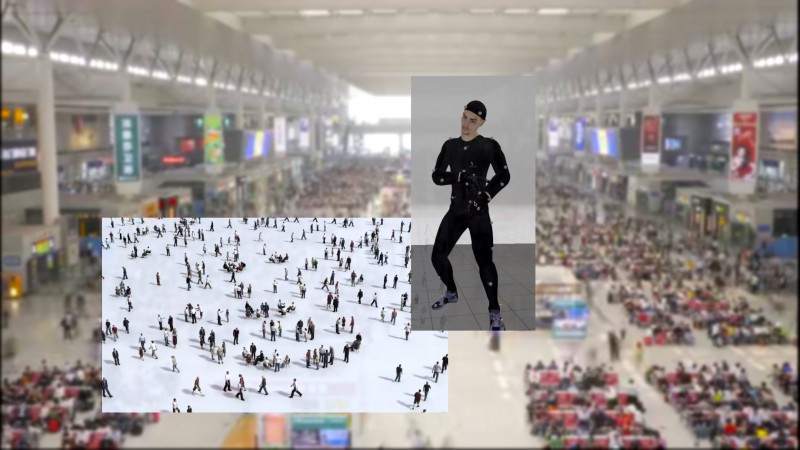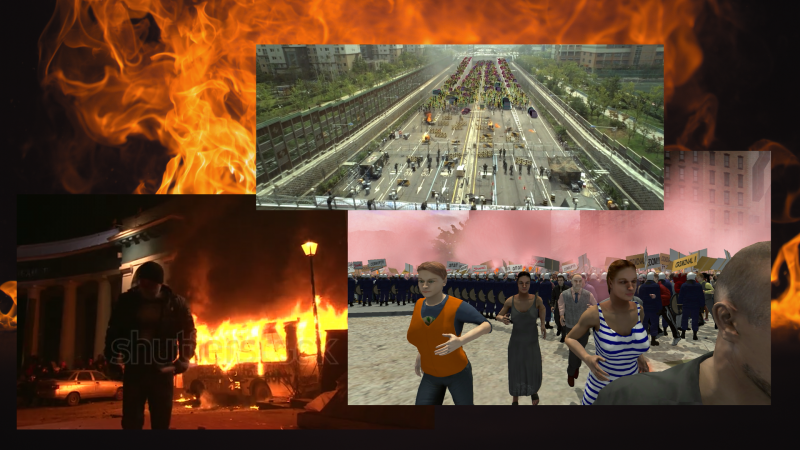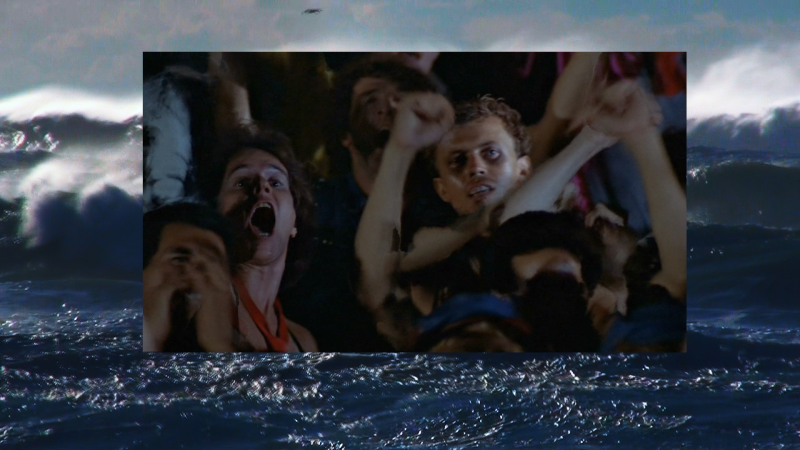Clemens von Wedemeyer
Transformation Scenario
* 1974 in Göttingen, GER, lives and works in Berlin, GER
studied at the Fachhochschule Bielefeld, GER, and the Academy of Fine Arts Leipzig, GER
Blockbuster movies are increasingly produced based on the use of algorithms. We have grown accustomed to watching scenes in which numerous automated charac-ters populate the screen. Animated by algorithms, they interact as an artificial crowd that appears lively and real. Simulated life originated in computer games and movies, but is meanwhile influencing many areas of the real world. In addition to urban planning and evacuation plans, market forecasts are also determined by virtual scenarios. To what extent does this impact our society and thus our life? Do we already sense a change?
Clemens von Wedemeyer’s video installation Transformation Scenario deals with these essential questions. The artist developed a complex structure of sequences running in parallel, in which fast-paced real images encounter decelerated fictive ones that are in turn connected with simulated scenes of a »Crowd Control Software«. »Crowd Control Software« is used by the police, for example, for training and analysis purposes to better assess crowds at demonstrations. By linking these different sequences like in a collage-like manner, von Wedemeyer develops a fascinating story about the effects of coordinated mass movements and the use of simulated swarm movements and group dynamics on our society. The objective explanations and narrators’ voices try to suggest that a simulated lifestyle should become our ideal.
The work is part of a long-term project by the artist that makes reference to the book Mass and Power (1960) by the Nobel Prize winner in literature, Elias Canetti. At the time, Canetti already sought to analyze the dynamism of crowds and raised the question of why and in which situations masses follow individual leaders. Von Wedemeyer addresses these questions and relates them to the present-day potential of masses. In times of populism, the issue proves to be especially relevant. Masses of acquired data can be used to establish power, while at the same time demonstrations and mass events form moments of resistance.
Transformation Scenario turns out to be a thought experiment that breaks with our notion of the influence of digital media on human relationships. Von Wedemeyer raises the awareness of the power of masses and confronts the viewers with complex and irrefutable images that have a lasting effect.
Malina Brinkmann
Artist Statement
I've been interested in images of crowds for a long time, such as in the 1999 video Mass, and inspired in this by Crowds and Power by Elias Canetti. I returned to his book while working on the video installation Transformation Scenario. Canetti describes crowds as entity and their different types, how they grow, transform or discharge. Published in 1960, and related to the totaleterian 20th century, my question was: What is the image of crowds today, what's the new specificity? How can we speculate the future?
For Canetti ‘invisible masses’ are ghosts, demons or angels. In our society it’s big data. Invisibility in a medium is a problem, as we loose understanding, so paranoia grows. But how to render data visible? Cinema has been trying to simulate life since its start. Now film extras are replaced by programmed digital autonomous agents – and similar algorithms are used by sociologists today to simulate social city life for example. I researched the tools and algorithms that were developed in film and game industries but could be used for crowd control in the future. The crowds of Canetti's youth were mostly on the streets, now they are active and channeled in the media.
Clemens von Wedemeyer



